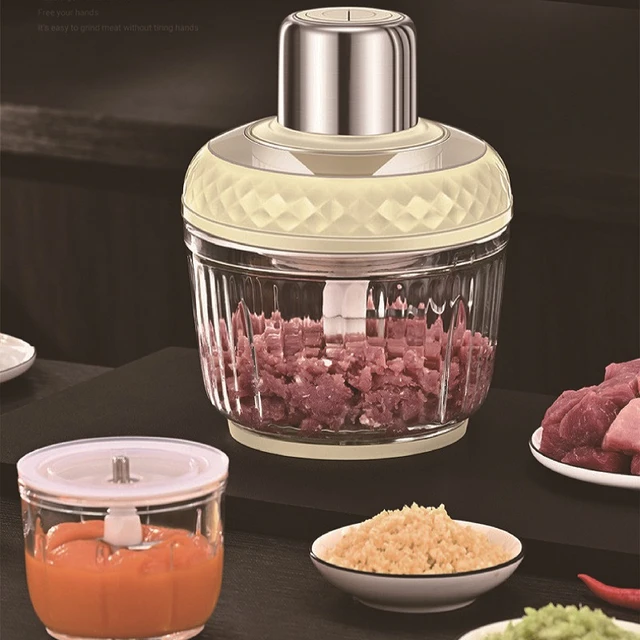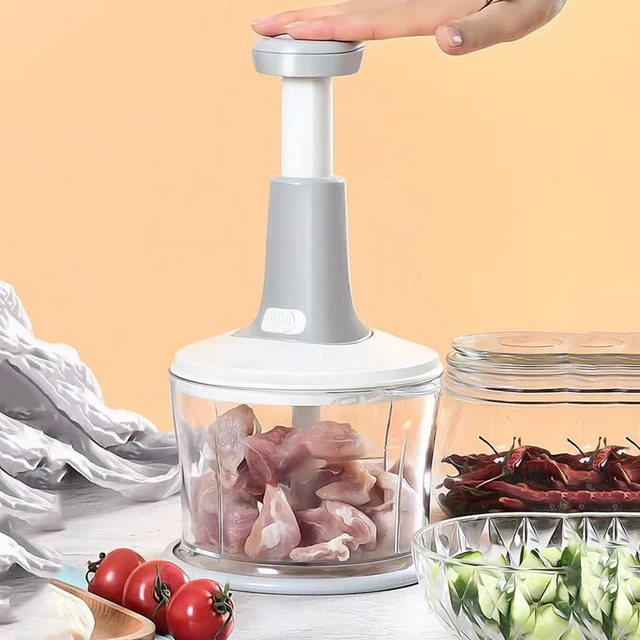
Introduction of food processor purpose:
In the modern kitchen, efficiency and versatility are paramount. A food processor stands out as one of the most indispensable tools available, serving a multitude of purposes that streamline food preparation. From chopping and slicing to puréeing and kneading, the food processor has revolutionized the way we cook. In this comprehensive article, we will explore the various facets of the food processor’s purpose, its features, benefits, maintenance tips, and much more.
What is a Food Processor?
A food processor is an electric kitchen appliance designed to facilitate various food preparation tasks. Typically, it consists of a motorized base, a bowl, a lid, and several interchangeable blades and discs suited for specific functions. Food processors come in various sizes and styles, each designed to meet specific culinary needs. With its ability to tackle multiple tasks, it serves as a time-saving tool in the culinary world.
Types of Food Processors
Understanding the various types of food processors available on the market can help you make an informed decision based on your cooking needs.
Mini Food Processors
Ideal for small kitchens and minimal tasks, mini food processors are compact tools best for making sauces, dips, or chopping small quantities of ingredients. Their smaller size makes them convenient for quick tasks.
Standard Food Processors
Most commonly found in kitchens, standard food processors offer a good balance between size and capability. They typically range from 7 to 14 cups in capacity and can tackle a variety of tasks, from slicing vegetables to making dough.
High-Performance Food Processors
Designed for serious cooks and professionals, high-performance food processors usually have larger capacities and more advanced features, such as variable speed settings and powerful motors. They excel in tasks like heavy dough kneading or making large batches of food.
Key Features and Functions
The food processor’s purpose extends beyond simple chopping; its diverse features enable a wide array of culinary applications.
Chopping and Slicing
One of the most common uses of a food processor is to chop and slice ingredients quickly. Whether you need finely diced onions for a salad or sliced carrots for a stir-fry, the machine efficiently cuts through the food.
Julienne and Grating
Many food processors come with specialized attachments that allow you to julienne and grate ingredients. This feature is particularly useful for preparing salads or garnishes, as it enables you to create uniform shapes and sizes.
Pureeing and Blending
Food processors are excellent for creating smooth purées, such as when you need to make sauces, dressings, or soups. Unlike traditional blenders, they provide greater control over the texture of the mixture, which can be crucial for certain recipes.
Dough Mixing and Kneading
Kneading dough can be a laborious task, but food processors can significantly reduce the manual effort involved. With a dedicated dough blade, you can mix and knead various types of dough, from bread to pastry, in just a fraction of the time it would take by hand.
Emulsifying
One remarkable feature of food processors is their ability to emulsify ingredients. This is particularly helpful when preparing dressings, mayonnaise, or any dish requiring the blending of liquids like oil and vinegar, leading to a smooth and cohesive mixture.
Mixing and Whipping
Aside from dough, a food processor can also mix batters for pancakes or cakes and whip cream for desserts. With the appropriate attachments, you can achieve the desired consistency in no time.
Grinding and Crushing
Some food processors are equipped with grinders for nuts, spices, or coffee beans. This function allows you to enjoy fresh ingredients at home, providing better flavor and nutrition compared to pre-packaged alternatives.
Benefits of Using a Food Processor
The food processor’s purpose extends beyond just functionality; it offers notable benefits that can enhance the cooking experience.
Time-Saving
One of the biggest advantages of using a food processor is the significant time savings it provides. Chopping, mixing, and kneading tasks that would typically take long minutes or even hours can be completed in mere seconds with the right attachments.
Consistency
Food processors ensure a consistent size and texture in your food preparation. Whether you are solely chopping onions or dicing vegetables for a stew, the ability to produce uniform sizes ensures even cooking.
Multi-Functional
A single food processor can replace several kitchen tools, such as choppers, blenders, and mixers, making it a versatile appliance. Owning a food processor simplifies your kitchen setup and reduces clutter.
Reduces Manual Labor
Many cooking tasks require considerable strength and effort, particularly in manual chopping or mixing. A food processor alleviates such physical burdens, making it suitable for people of all ages, including those with physical limitations.
Encouragement of Healthy Eating
Having a food processor on hand may encourage more home cooking. People who invest in this appliance often find themselves preparing fresh ingredients for meals more frequently, which can contribute to healthier eating habits.
Maintenance of Food Processors
While food processors are incredibly useful, proper maintenance is essential to ensure that they continue to operate efficiently and last a long time.
Cleaning and Care
To maintain your food processor, it’s crucial to clean it after every use. Most detachable parts, such as the bowl, lid, and blades, can usually be washed in warm, soapy water or loaded into the dishwasher. However, the base should be wiped down with a damp cloth, and the motor should be kept dry.
Blade Sharpness
The effectiveness of a food processor largely depends on the sharpness of its blades. Regularly check for any dull blades and replace them as needed. Dull blades not only compromise performance but can also be unsafe during use.
Motor Maintenance
Make sure that the motor is running smoothly. Avoid overloading the machine and always follow the manufacturer’s guidelines regarding use. If you notice any unusual sounds or resistance, consult the manual or customer service.
Culinary Applications of a Food Processor
The versatile purpose of a food processor extends into various culinary realms. Let’s take a closer look at some specific applications it can address.
Meal Prep
Food processors can be indispensable in meal prepping, allowing you to chop large quantities of vegetables, grains, or proteins in one go. This can simplify your cooking process throughout the week, saving time and hassle.
Homemade Sauces and Condiments
Creating sauces like pesto, hummus, or salsa becomes a breeze with a food processor. Simply toss in the ingredients, and the machine will do the rest. You can customize flavors according to your preferences, ensuring fresh and flavorful additions to any meal.
Baking
From cookie dough to cake batter, food processors are perfect for baking tasks. They combine ingredients quickly and efficiently, saving you the effort of mixing by hand.
Nut Butters
For those who enjoy making their nut butters at home, a food processor is essential. You can easily grind nuts to your desired consistency, adding flavors like cocoa, honey, or spices along the way.
Baby Food
If you’re preparing meals for a young child, a food processor is invaluable for making baby food. You can purée fruits, vegetables, and grains into smooth textures tailored to your child’s developmental stage.
Smoothies and Healthy Drinks
Some models come with blending capabilities, making it easy to whip up refreshing smoothies or healthy drinks. You can blend fruits, leafy greens, protein powders, and more, ensuring you start your day on a nutritious note.
 Food Processor Purpose in Different Cuisines
Food Processor Purpose in Different Cuisines
Different cuisines around the world can benefit immensely from the versatility of a food processor. Let’s explore how various cultures employ this appliance.
Asian Cuisine
In Asian culinary traditions, food processors play a vital role in preparing ingredients for stir-fry dishes, dumplings, and sauces. The ability to quickly chop vegetables or grind spices enhances the efficiency of cooking.
Italian Cuisine
For Italian dishes, a food processor can be invaluable when prepping sauces like marinara or pesto. Chopping herbs, garlic, and tomatoes can be achieved with ease, allowing cooks to focus more on the cooking process.
American Cuisine
In American cooking styles, food processors are frequently utilized for making pie crusts, salad dressings, and other staples. The consistency offered by the appliance ensures that recipes turn out perfectly every time.
Middle Eastern Cuisine
Middle Eastern cooking often requires the use of a food processor to create traditional dishes like falafel or tahini sauce. The machine simplifies tasks that may require extensive manual chopping.
Conclusion: food processor purpose
In summary, the purpose of a food processor shines brightly in the realm of culinary arts. It combines efficiency, versatility, and convenience, making it a must-have appliance in modern kitchens. From chopping and slicing to dicing and pureeing, a food processor can tackle various tasks quickly and effectively. Understanding its features, benefits, and applications can enhance your cooking experience and inspire you to explore new culinary horizons.
As technology and cuisines continue to evolve, the food processor remains a timeless tool that adapts to the needs of the everyday cook. It not only simplifies meal preparation but also encourages a lifestyle centered around health and home-cooked meals. For anyone looking to enhance their culinary skills, investing in a food processor is a practical step toward achieving that goal.







